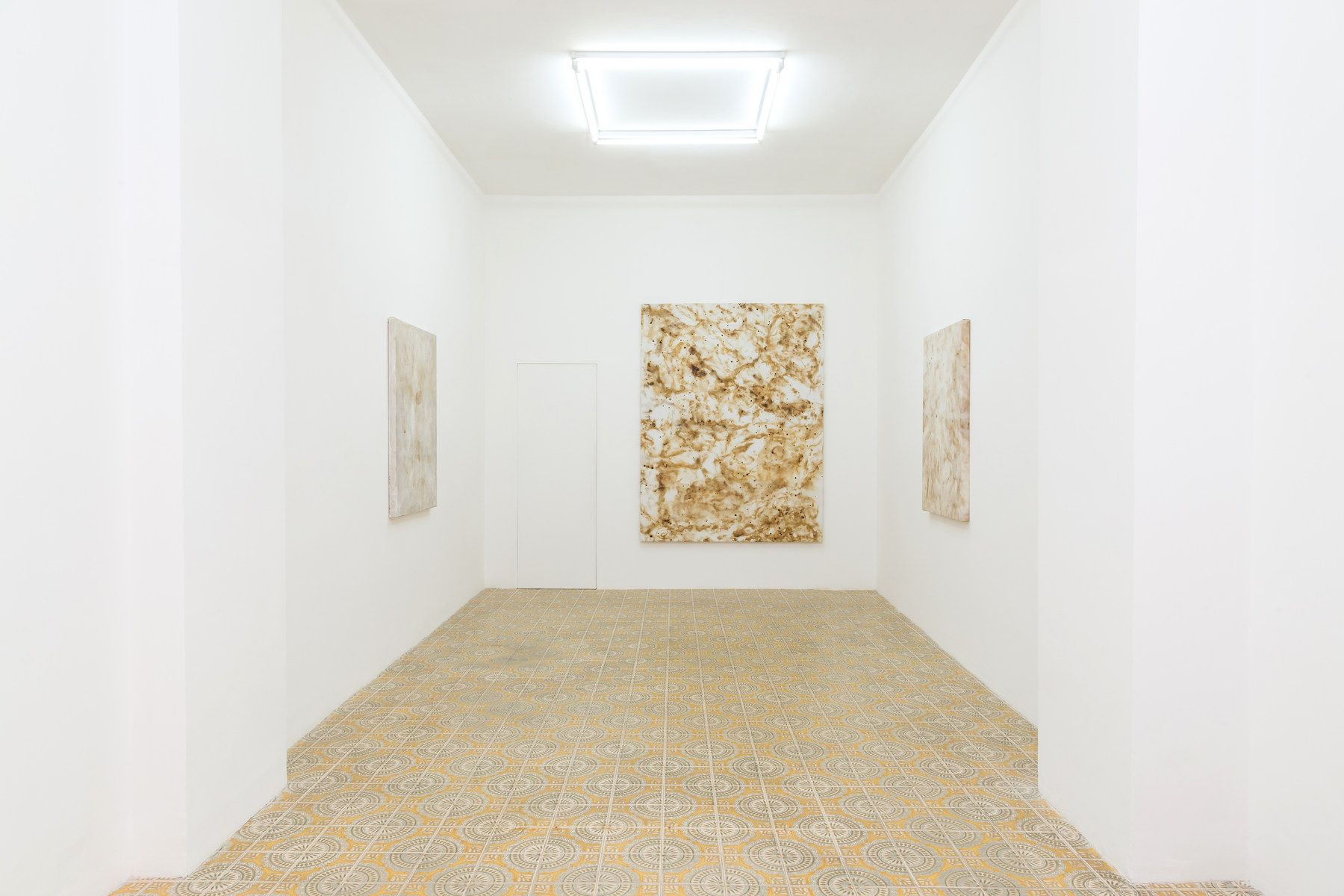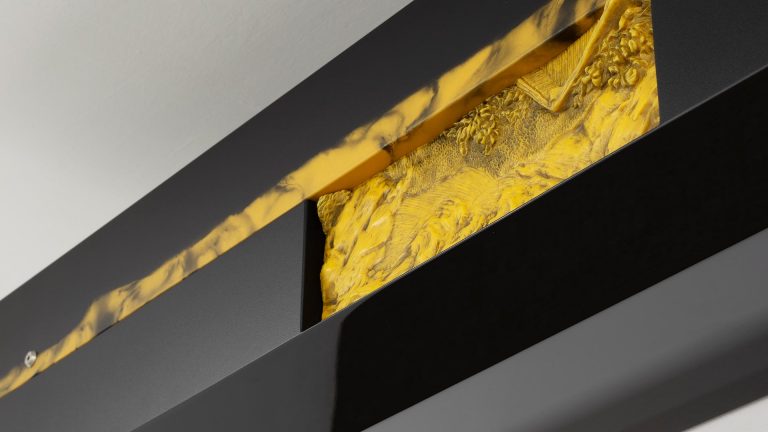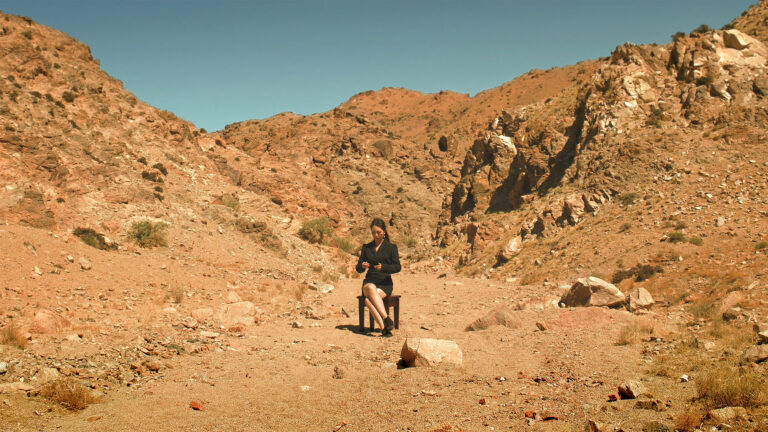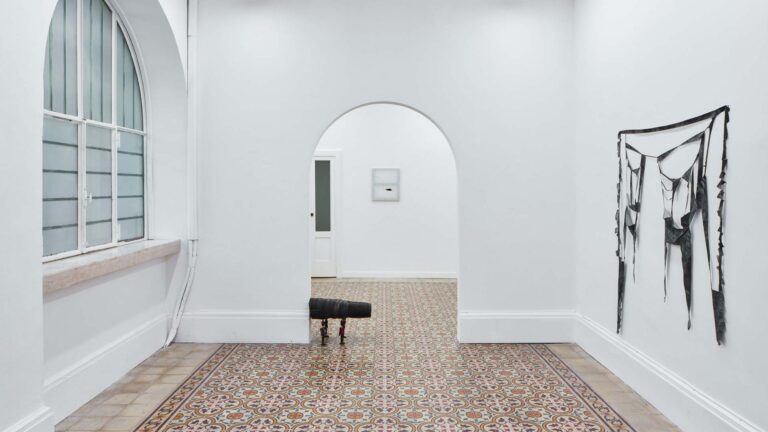Artist: Alessandro Moroder
Exhibition title: Domenica
Venue: Acappella, Naples, Italy
Date: September 24 – October 25, 2015
Photography: images copyright and courtesy of the artist and Acappella, Naples
In Domenica, Alessandro Moroder examines the systems in which notions of masculinity are constituted and demonstrated as seen in European football culture. In Dubordian form, the stadium exercises control through the pycho-social ramifications of the spectacle as cultural mediator.
Recapitulating the pageantry of the game, the expletive yelling, chest beating, and feverish fanaticism, or as Bill Buford refers to as, “terrace culture”; he directly applies a burning safety flare onto the canvas, reenacting routines of spectatorship. His works are performances in their physicality as the once pristine gessoed canvases are laboriously scorched asserting their surfaces as a vulnerable membrane; each mark, burn, and hole indexes the painting in process. These paintings act as documentation of the artistic gesture and a recontextualization of the spectacle in that the situations that the materials, actions, and bodies exist in football are removed. Though these forms are abstracted, the pieces retain their grounding in European subculture; the series operates as a vehicle for impressions, evidence, and monuments of the game.
Similar to the pre-game rituals that some of the athletes abide by, he has honored the same observance and practice in the making of these works. After years of trial, he has developed a conceptual and practical method of using the lit flare additively, rather then physically abrading the material. The often smuggled-in flares act as a signifier of unbridled fandom, but is also a tool application rather than subtraction. Controlling fire, ash, and spilled wax requires immediacy and reiterates the body (the artist,canvas, or crowd) as vulnerable to the consequences of violence: burns, singes, or incineration.
In Domenica, Italian for Sunday, Moroder explores flares as not only instruments of destruction, but also producers of sublime beauty and collectivity. The pyrotechnic choreography during matches in Europe, usually played on Sundays, emitted from safety flare and smoke bombs combine into clouds of club colors, filling the tiers of the stadium in a show of spectacle and intimidation. The paintings act as a non-figurative representation of the body, autonomy, and anonymity, as well as the idea of ones’ team as a sense of belonging. He positions the stadium and his canvases as sites of performance of loyalty, power, and personal frustration.
Moroder derives the series from the practices and attitudes born from the stadium and explores the possibilities of translating these specific archetypes and formal vernacular into paintings of action, chance, and memory.
Alessandro Moroder, FlarePainting#91, 2015
Alessandro Moroder, FlarePainting#72, 2015
Alessandro Moroder, FlarePainting#97, 2015
Alessandro Moroder, FlarePainting#71, 2015
Alessandro Moroder, FlarePainting#73, 2015






















